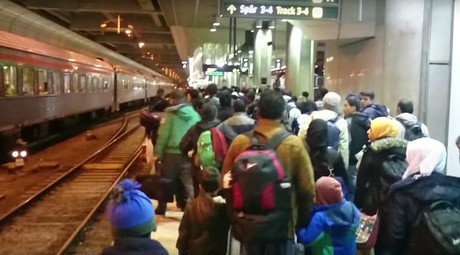‘10,000 refugees entered Norway in October - many crossing over Russian border’

Drastic measures will have to be taken by Scandinavian countries as refugees are coming further north where the standards for the welfare state and integration measures are very high, said Helge Luras, Centre for International and Strategic Analysis.
Scandinavian countries are introducing temporary border checks in order to halt the influx of refugees and to prevent illegal immigration.
RT: Scandinavian countries are taking more refugees per capita than the rest of Europe. Is that fair?
Helge Luras: Whether it’s fair or not, it is a different question. The fact is that they are coming, and they are coming based on previous practices. We have very high standards for the welfare state and integration measures. So I am not surprised that they are actually coming here and including to Germany.
RT: What tensions are you seeing as a result of this?
HL: Well, we have still to see tension in Norway. It is a bit different in Sweden, because they have taken in a lot more over many more years than we have here. So they have more immigrants. But we have seen a significant shift in public opinion I think in all Scandinavian countries. I know in Norway over the last three months it went from being sort of humane and altruistic about this migration flow to now public opinion and political parties are shifting towards much more restrictive measures being supported.
RT: What is the government saying at the moment? When the crisis started many countries opened their borders encouraging refugees to come. What is the situation now in Norway?
HL: The situation is that we have as many in one month as we have had over the whole of last year. So 10,000 a month in October - a lot of them are actually coming over the northern borders, the Schengen border with Russia. And all operators involved are stretched beyond limits. This is being recognized, and measures need to be taken in order to meet this changing situation. More and more people understand that the previous practice is not sustainable.
RT: Do people see it as a last resort then to close the borders? Or are people hopeful that something might come from the summit that is ongoing in Malta at the moment?
HL: I guess they are hopeful, but I think in the end some drastic measures will have to be taken. With the current system those countries where refugees don’t want to stay are just simply passing the refugees on, and they are coming further and further north. When they come to Norway there is no further way to go than the Barents Sea and the Atlantic Ocean. Basically I think the response from our side will be even more drastic than what we see today.
The statements, views and opinions expressed in this column are solely those of the author and do not necessarily represent those of RT.













